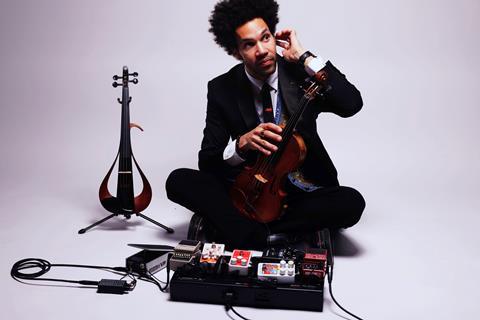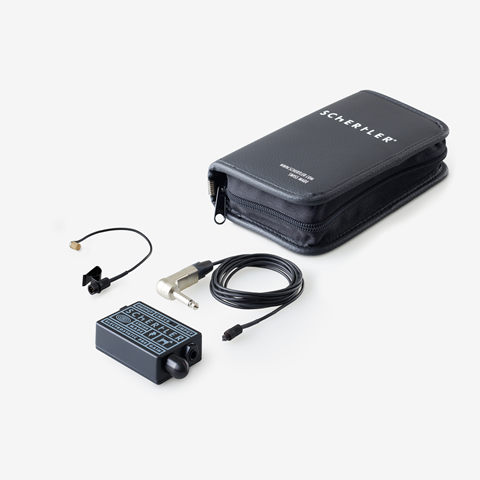In our Accessories 2024 supplement, the French jazz violinist shares his go-to tech accessories

Discover more Featured Stories like this in The Strad Playing Hub
The relatively young tradition of jazz violin allows for great freedom and space to explore new possibilities. The use of technology, from electric violins to an array of effects pedals, has inspired me to push the boundaries of my musical expression.
In addition to my acoustic violin, I have been using the Yamaha YEV and the Yamaha Silent Violin (yamaha.com). Some pedals might not perform as effectively with my acoustic violin. But there is a tool for each situation, whether I am working with a jazz band, rock, pop or an orchestra; each scenario has its own set of challenges with the right pedal, and setup. The Yamaha Electric violins have opened territory where the acoustic violin cannot reach, offering a wider range of effects and allowing me to utilise pedals initially designed for guitars, basses, or keyboards. Because multiple microphones are inside the bridge, the response is sharper, and the pedals can be utilised to their full potential. I can also incorporate percussion into my loops by tapping on the violin without the restraint I might feel with my acoustic.

The Schertler Stat V Pickup (schertler.com) has been a revelation for my performances, capturing the natural acoustics of the violin without sacrificing quality. It is completely isolated from the environment and captures only the violin sound. This ensures there’s no bleed from other instruments around, unlike what one might experience with a clip condenser mic. Another aspect of the Stat V is its lightweight, which gives minimal interference with the feel of your instrument. Its installation on my violin 15 years ago really changed everything for me and got me the ideal balance between the violin’s warm, organic tones and the necessary amplification for live band settings.

The Boss RC-3 Loop Station (boss.info) has been helpful in creating music on stage. It allows me to layer violin parts in real time and make intricate, textured compositions. This looper is indispensable for my solo performances, offering a vast landscape of arranging and improvisation possibilities.
The Electro-Harmonix Canyon Delay Pedal (ehx.com) (above) adds an atmospheric layer to my sound. Its analogue delay capabilities produce a variety of echoes that magnify the violin’s timbre. The pedal’s flexibility in adjusting delay time and feedback control has made it essential for creating a kind of mystical density in the sound and has brought new ideas for improvising.
Subscribers to The Strad receive the 2024 Accessories supplement free with their copy of the June 2024 issue
Read: ‘How do you make that first mistake?’ - Jazz violinist Scott Tixier on the power of improvisation
Read: ‘I dismantled it almost entirely’ - Writing improvisatory and jazz-infused Lutosławski arrangements
Discover more Featured Stories like this in The Strad Playing Hub
The number one source for playing and teaching books, guides, CDs, calendars and back issues of the magazine.
In The Best of Technique you’ll discover the top playing tips of the world’s leading string players and teachers. It’s packed full of exercises for students, plus examples from the standard repertoire to show you how to integrate the technique into your playing.
The Strad’s Masterclass series brings together the finest string players with some of the greatest string works ever written. Always one of our most popular sections, Masterclass has been an invaluable aid to aspiring soloists, chamber musicians and string teachers since the 1990s.
American collector David L. Fulton amassed one of the 20th century’s finest collections of stringed instruments. This year’s calendar pays tribute to some of these priceless treasures, including Yehudi Menuhin’s celebrated ‘Lord Wilton’ Guarneri, the Carlo Bergonzi once played by Fritz Kreisler, and four instruments by Antonio Stradivari.






































No comments yet